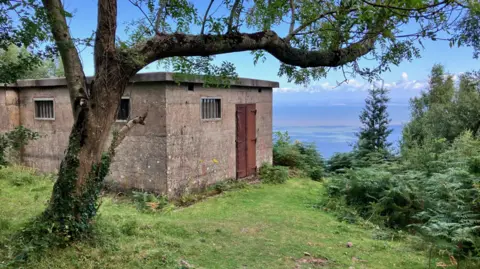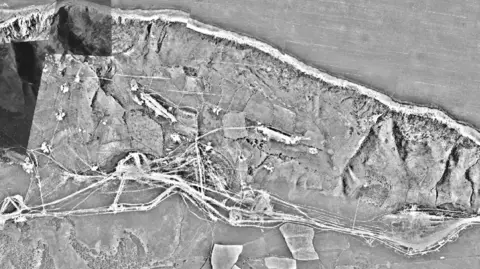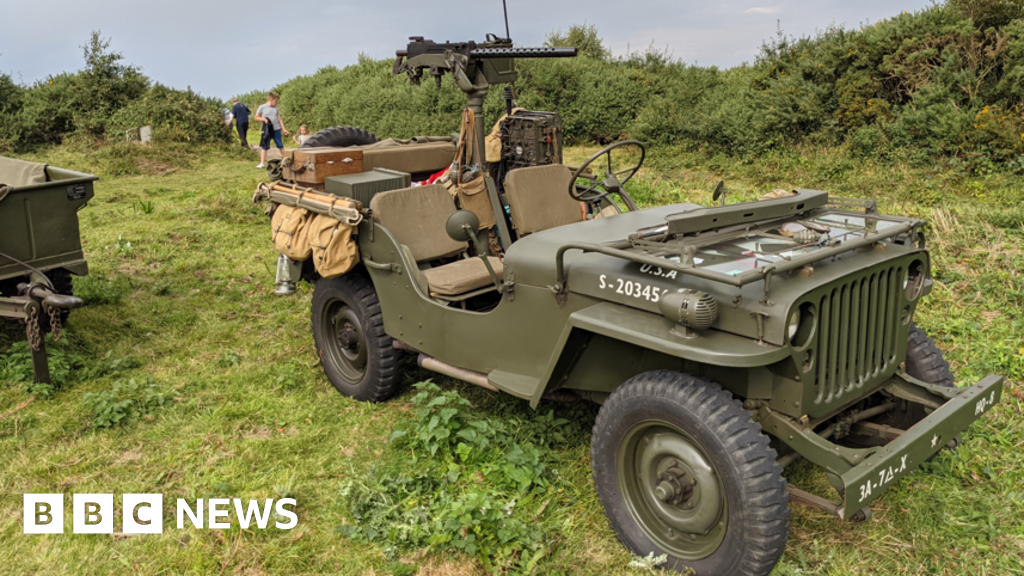Somerset’s rich war heritage is celebrated with a convoy of military vehicles.
The parade goes from the old hospital grounds in Minehead to the tank training area and World War II radar station on North Hill.
It is part of a free event hosted by the Exmoor National Park Authority, which includes exhibitions, activities and a walking tour of the historic site.
“We are fortunate to have such a rich historical and archaeological heritage here in Exmoor, so it is a really exciting adventure to come and discover it,” said Historic Environment Officer Dr Lucy Shipley.
 Exmoor National Park Authority
Exmoor National Park AuthorityNorth Hill in Exmoor was used extensively for military exercises during World War II.
It became one of the country’s five tank training ranges for British, American and Canadian troops.
It also had a top-secret radar station – one of 244 across the country – and was part of a coastal defense chain for identifying ships and low-flying aircraft.

“The radar station, the only remaining structure, is part of the wider landscape of a military training area,” Dr Shipley told BBC Radio Somerset.
“We are so lucky that we also have the memories of the people who lived in Minehead during the war,” she added.
Local residents Peter Batchelor and Dudley Parsons recalled seeing the vehicles driving along the seafront.
“The tracks of the Churchill tanks tore up the streets and damaged iron railings, and the noise and gunfire were like living in a war zone.
“But soon it became part of everyday life,” they said.
 Royal Air Force
Royal Air ForceExmoor Ranger Tim Parish said: “It was the early days of tank warfare, so imagine you were someone watching these things being unloaded from the station and rumbling along the very narrow streets.”
“Reaching the summit of North Hill must have been very special for everyone involved,” he said.
Visitors to Saturday’s event are asked to donate to the charity CareMoor for Exmoor.


